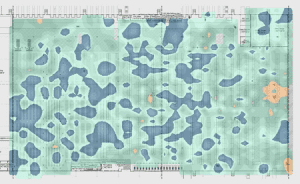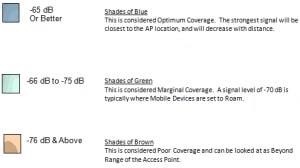Having trouble with consistent wireless coverage?
At RMS Omega, our services team has encountered many healthcare facilities with wireless systems that are not living up to their initial expectations. So what’s the best way to correct a wireless issue? First and foremost, talk to your staff and identify common pain points. Talk to those who utilize the wireless network daily, they will know when and where it is not performing properly.
Second, don’t assume that adding additional wireless access points (APs) will correct poor coverage. Believe it or not, when APs are placed in the proper locations you may need less than you think. When additional APs are introduced and your deployment becomes more complex, there are many factors that come into play and difficulties that can occur. This is especially true when using the free radio frequency spectrum.*
When evaluating your network, keep in mind there are several factors that can have an effect on your wireless system. For example, certain equipment found in medical facilities can cause interference. Materials used to control radiation found near x-ray machines can cause dead zones. In addition, access points (APs) from the hospital floors both above and below can cause Co-Channel Interference. Co-Channel Interference is caused when 2 access points in proximity to each other are transmitting on either the same channel, or an overlapping channel. The result causes the 2 access points to interfere with each other, ultimately causing the signal strength to weaken. Co-Channel Interference is mainly seen in the 2.4 GHz spectrum (B/G/N) because there are only 3 non-overlapping channels that can be used of the 11 available channels.
Conduct a proper analysis before making adjustments – What is an A&O?
If your devices are not connecting to the wireless network properly, we highly recommend conducting an appropriate analysis of your current system prior to making any adjustments. At RMS Omega, we provide a specialized wireless service called Analysis and Optimization, otherwise known as A&O. During an A&O, our RF engineers use a collection of highly sophisticated test equipment to produce a series of reports and heat maps. They first analyze the coverage of your hospital’s current system, what interference you are experiencing, and then go about determining how to make it work better for you, rather than against you. Once your report is completed, our RF engineers are capable of making any necessary adjustments to your equipment, or RMS can guide your IT staff in making the suggested corrections and adjustments themselves.
In a typical A&O report, you will receive a heat map showing the wireless coverage throughout your healthcare facility. Below is an example from an A&O the RMS services team recently performed at a hospital whose wireless issues were caused by Co-Channel Interference from APs on other floors.
One issue that can be caused by Co-Channel Interference is the nullification of the signal resulting in a smaller coverage area. This is demonstrated by comparing the -65 dB Coverage areas (Blues) in the 2 graphics below. The only change made to this Access Point was to remove the Co-Channel Interference.

Explanation of RF Coverage
During the analysis of your facility, our technicians will produce a Heat Map of actual RF Coverage. Below is an explanation of what the various colors indicate. For each range, the darker shades of blue indicate a stronger signal.

Additional issues caused by Co-Channel Interference include the degradation of the signal quality resulting in resending data from mobile devices, loss of connectivity, and mobile device freezing. Mobile device freezing is due to very poor signal quality when the signal strength is still high, therefore the mobile device will not roam to another Access Point.
As you can see in the example above, overall wireless coverage was drastically improved when the Co-Channel Interference was removed. There was no need to purchase any new equipment!
Have questions about wireless?
Contact us! We have a team of Wi-Fi experts that are more than happy to help answer your questions.
*What is the free radio frequency spectrum?
The free radio frequency spectrum includes the radio frequencies that the Federal Communications Commission (FCC) does not require the user to have a license and is free of costs. Wi-Fi is an example of one of the free radio frequencies.